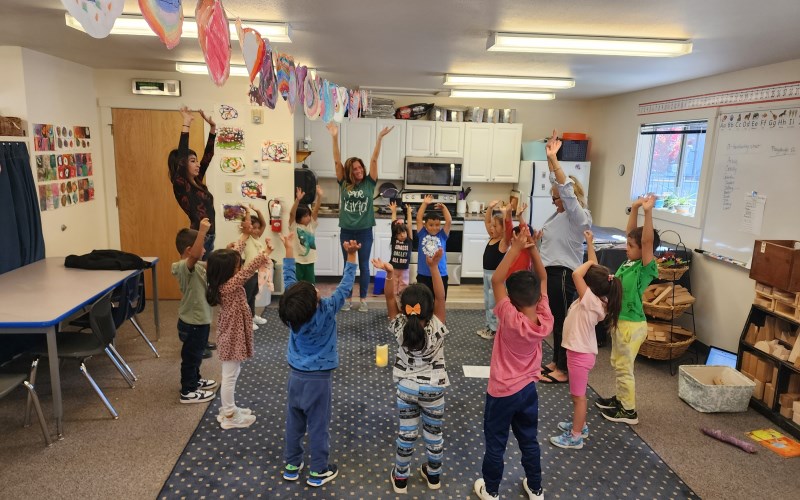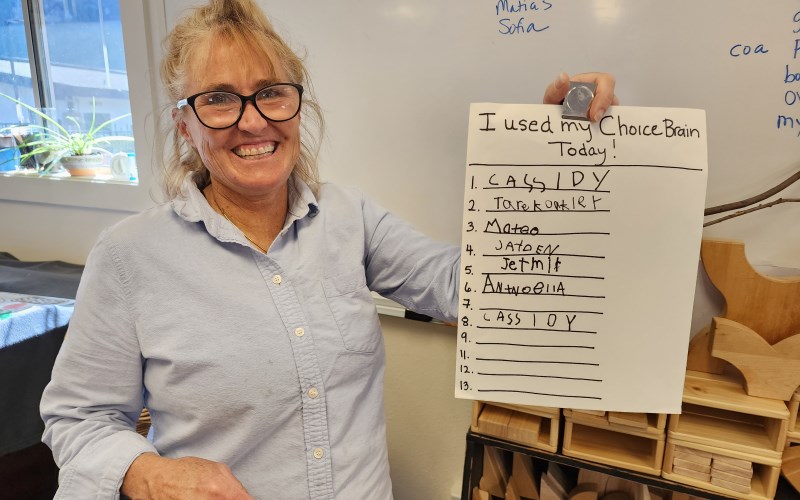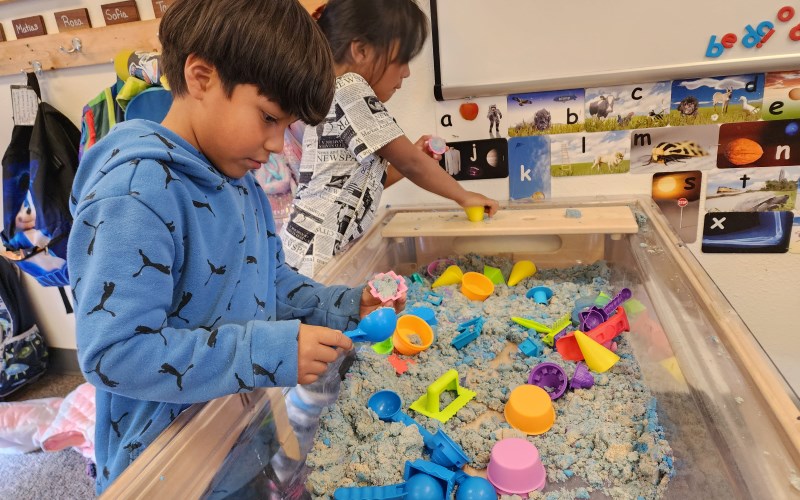|
STORY AND PHOTOS BY KAREN BOSSICK The first-grader sided up to Lisa Dirksmeier as she told her how her day had gone. “Someone stepped on my hand and it woke up my lion brain—made me mad,” she said. “Then I went to my choice brain and, instead of getting mad, I asked him to say he was sorry.” Socio-emotional learning is as much a part of the curriculum at the Far+Wise afterschool program as math and reading. The program’s child development specialist Kris Stoffer talks to the hundred kids in the program at Hemingway, Alturas and Bellevue schools about the different parts of their brain brains once a week.
|
|

Students do some yoga poses as they start the afternoon.
|
|
|
Their lion brain roars, she tells them. Their snake brain is kind of sleepy and calm. And their choice brain, with which they choose to think before they act, is characterized by a lightbulb. “We do a lot of social-emotional work.,” said Dirksmeier, who came to Far+Wise from the Sun Valley Community School’s Early Learning Program. “The older kids in particular missed a lot during the pandemic. About half of the kids had behavioral challenges as a result of the disruption. “So, we’re teaching them to be respectful, calmer, self-regulated. We ask them things like: What does it feel like when someone hurt your feelings? And, what can you do to avoid hurting someone else’s feelings?” Dirksmeier teaches the new Far+Wise group, formerly I Have a Dream-Idaho, at Hemingway STEAM School from 2:30 to 5:30 p.m. five days a week. There are 22 students under her care--four of whom don’t speak English.
|
|

Lisa Dirksmeier shows off a list of students who acknowledged using their Choice Brain.
|
|
|
Everything she and her teaching assistants do is with intention. When the students recite their letters, a tiny tot points a pointer at each letter as they say it, the idea being that older children are expected to be leaders or the younger students. Later the students will trace the new letter they have learned in sand, then Play-Doh, to cement it into their memory. Dirksmeier teaches the youngsters to respect others by passing a purple talking stick the kids made around the talking circle. She takes it one step further, having them acknowledge the person who passed it to them and the person they pass it to. “When you have the stick, it’s time to talk and when you don’t it’s time to listen,” she said. We show them how to have a strong voice, look people in the eyes and be confident. Just little baby steps. But some of the kids could barely talk when we started a month ago. Now they’re talking.”
|
|

Students make some elaborate ice cream cones for their guests.
|
|
|
Even the book Dirksmeier choose for the day’s reading contains lessons. “This book is called ….” she starts. “No, David,” they chorus. Over the next 10 minutes the children explore the plight of a child who’s tracks mud into the living room, chews with his mouth open and breaks a vase.
|
|

Lis Dirksmeier reads from “No, David.”
|
|
|
“I love you, David, even if you make mistakes,” his mother says in the end. “Do you make mistakes?” Dirksmeier asks. “Everybody makes mistakes. I make mistakes,” she adds. Of course, it wouldn’t do not to do math. The children learn numbers not only by rote equations but by in play time. Several of the youngsters, for instance, have started a business—the Hollywood Ice Cream Shop. And they are quick to sell guests an ice cream cone, which they fashion out of play material. And, yes, it’ll cost you—although you may feel pretty good when they hand you $50,000 in change.
Happily, youngsters who tested below grade level in reading when they started the Far+Wise program last year are now testing above grade level, said Laura Lewis, the program’s executive director. “Teaching them math early is important, too,” she added. “If they fall behind in math it’s hard for them to catch up.”
|